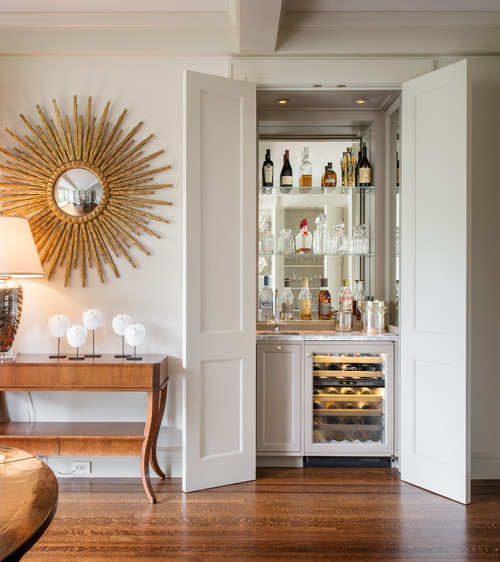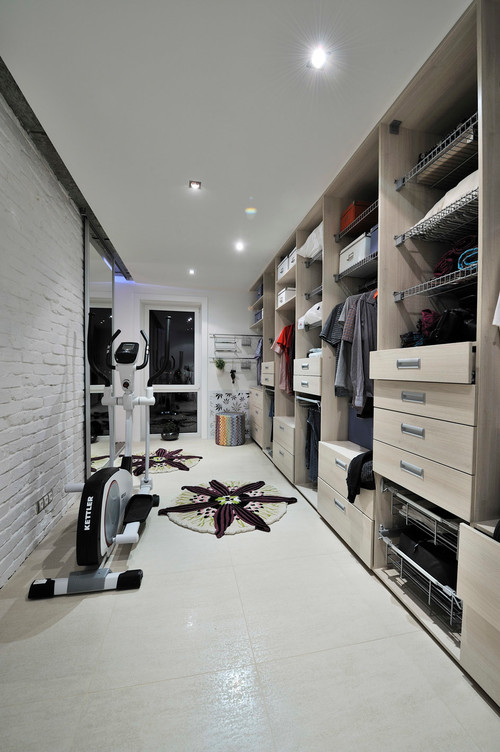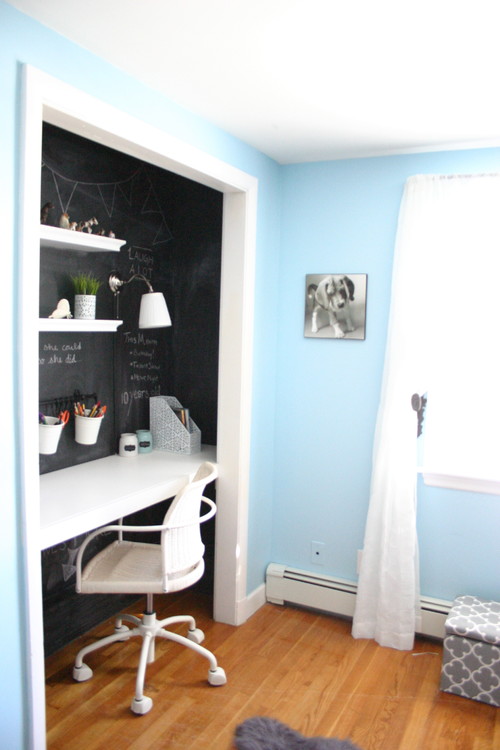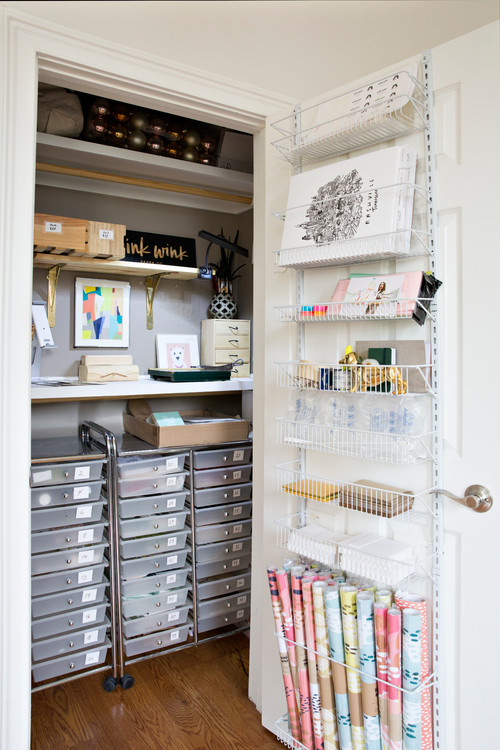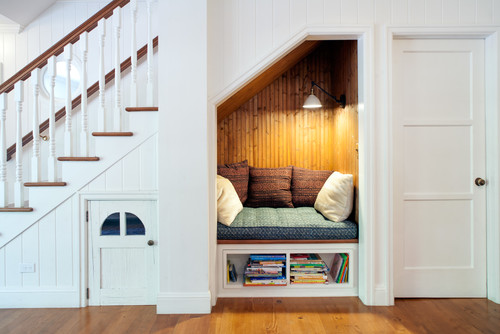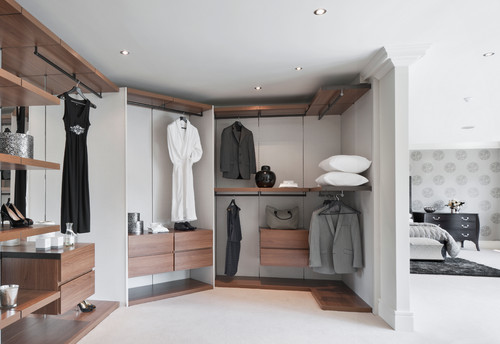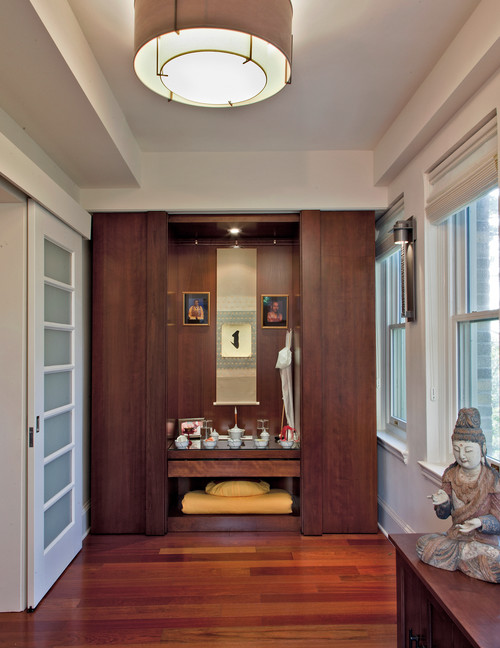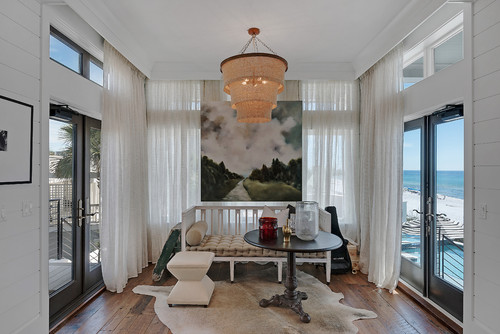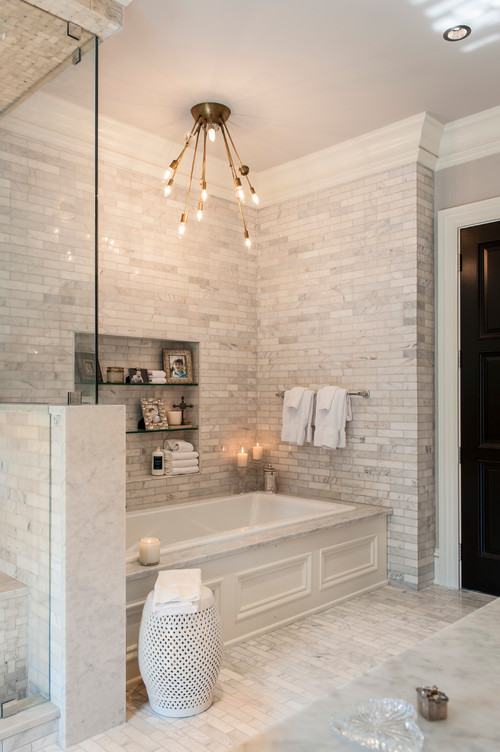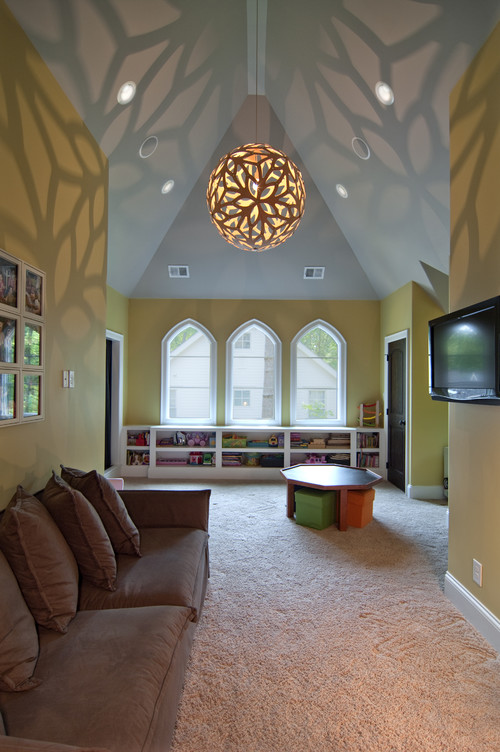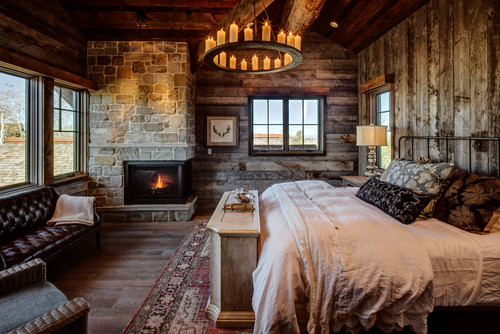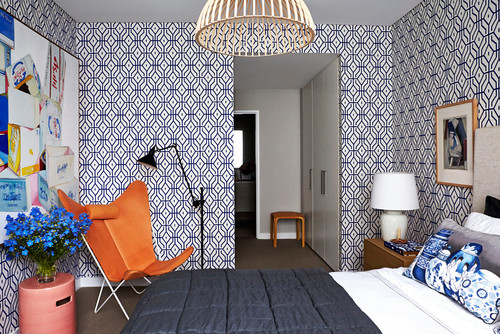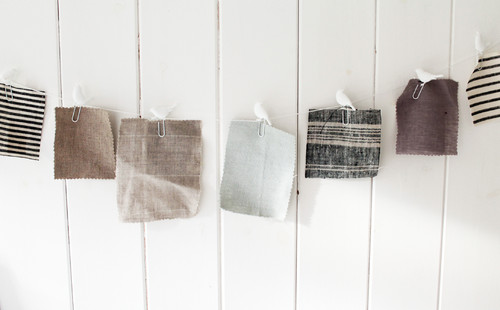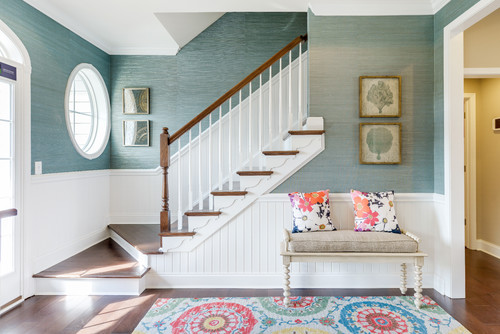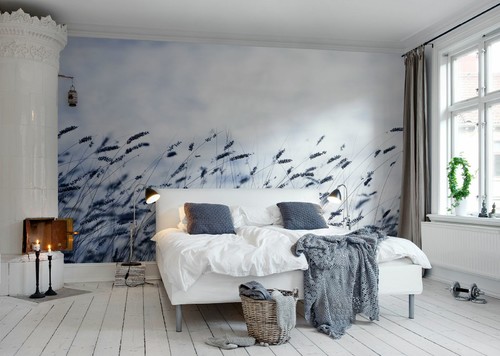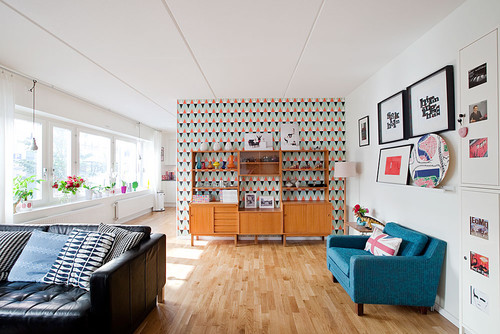How to Get Wood Flooring on Any Budget

 Hardwood flooring is often considered a must-have feature by new homeowners or those undertaking a remodeling project. Wood is a natural, renewable resource, plus wood flooring complements all types of home decor, from traditional to contemporary. Hardwood flooring is often considered a must-have feature by new homeowners or those undertaking a remodeling project. Wood is a natural, renewable resource, plus wood flooring complements all types of home decor, from traditional to contemporary. The downside is that wood floors, especially solid wood floors, can be expensive. Some exotic wood species, such as Brazilian walnut, can cost more than $15 per square foot — and that doesn’t include installation labor. However, you can find alternatives that give you the look of real wood at a reduced price — some as low as $2 or $3 per square foot. Here are some of the best budget-friendly hardwood floor choices.
Hardwood flooring is often considered a must-have feature by new homeowners or those undertaking a remodeling project. Wood is a natural, renewable resource, plus wood flooring complements all types of home decor, from traditional to contemporary. Hardwood flooring is often considered a must-have feature by new homeowners or those undertaking a remodeling project. Wood is a natural, renewable resource, plus wood flooring complements all types of home decor, from traditional to contemporary. The downside is that wood floors, especially solid wood floors, can be expensive. Some exotic wood species, such as Brazilian walnut, can cost more than $15 per square foot — and that doesn’t include installation labor. However, you can find alternatives that give you the look of real wood at a reduced price — some as low as $2 or $3 per square foot. Here are some of the best budget-friendly hardwood floor choices.
Calculating the Overall Price
The products listed below go from most expensive to least expensive, but there’s a lot of overlap among the categories. For example, some solid wood products are less expensive than some luxury vinyl tiles. Before you make your final decision, factor in the cost of professional installation, which can add as much as $3 to $10 per square foot to the total cost of a flooring project. Some of the items that can drive up installation costs include:
• Removing and disposing of the old flooring
• Repairing the subfloor when necessary
• The size and shape of the room(s)
• Stair installation
If you’re an experienced DIYer, you can save money by installing the floors yourself. Beginners should leave the job to the professionals, though — you may end up making mistakes that are even more expensive to fix.
Solid Wood
This is usually the most expensive option, but there are ways to reduce the cost, especially in the long run. When properly maintained, solid wood flooring will last as long as the house stands. You can freshen up the look at any time by sanding away the old finish and restaining and sealing the floor.
Some wood species are more expensive than others. Fortunately, many of the most common types, such as oak or maple, fall into the low- to mid-range of costs. Solid wood products can come finished or unfinished. If the floor is unfinished, the installer will stain and seal the floor once it is in place, which adds to the installation costs. On the flip side, the prefinished product may cost more up front.
Engineered Wood

These products are constructed of multiple thin layers of material that are bonded together under pressure. The top layer is made from a familiar wood species — such as oak or maple — and is usually treated with a factory-applied finish that resists dirt and scuff marks. Engineered wood floors are less likely than solid wood to wrap and twist because of moisture and humidity, so they can be installed in basements and bathrooms. Some products feature click-in-place installation — no need for adhesives or fasteners — which is an easier, faster installation method perfect for DIYers. However, a vapor barrier needs to be installed or attached to the flooring.
Bamboo
Bamboo floors are manufactured to either look like traditional wood flooring or showcase their distinctive grass-like look. Some bamboo products are harder than solid wood flooring. They are strong and long-lasting, but are easy to scratch and are not recommended for areas prone to moisture. Bamboo is a type of grass and grows to maturity much more quickly than trees do, which makes it a sustainable, eco-friendly option. Click-in-place installation is available for some products.
Porcelain Tile

New porcelain tiles can be made to look like anything, including real wood. Some products are available in planks that have a wood-like texture. Porcelain tiles are an inexpensive, easy way to achieve a “reclaimed” wood look — many tiles mimic the texture and color variation of aged planks. As with regular tiles, they are durable and can be used in wet areas, including bathrooms. They are also stain-resistant and much easier to clean than real wood — spills wipe up quickly, and using just water and a mild soap makes them shine. Porcelain tiles must be installed using mortar and grout.
Luxury Vinyl Tile

As with porcelain tiles, luxury vinyl tile (LVT) can look like wood and come in traditional-style planks. LVTs are thicker and more durable than standard vinyl. They are usually waterproof, are easier to clean than true hardwoods, and can be installed in any room in the house. To prolong their durability, many LVTs are treated to resist color fading and scratches.
Laminate

Laminate floors are composed of a high-density hardboard core protected by a melamine layer that can be made to look like anything — including real wood. The top layer protects against dirt and scuff marks, but the material should not be installed in rooms that are exposed to moisture. Click-in-place installation is available.
Hardwood flooring is a classic, timeless look that fits a wide range of design options. Thanks to today’s selection of flooring products, it’s easy to get a wood look at a lower cost. When making your final decision, be sure to include both the material costs and the installation costs. That way, you’ll get the look you want at a budget-friendly price.
DIY author Fran Donegan has written several books, including Paint Your Home. He also writes for The Home Depot about homeownership and projects that add value to your house. To see a selection of hardwood flooring options like those described by Fran in this article, please click here.
This article is editorial content that has been contributed to our site at our request and is published for the benefit of our readers. We have not been compensated for its placement.
Source: CB Blue Matter Blog
Can First Time Home Buyers Use a 401k For a Down Payment?


Coming up with a down payment to purchase your first home can feel like a herculean task. How can you possibly save twenty, thirty, fifty thousand dollars—approximately 11% of your home purchase price in 2016 (National Association of Realtors)—to pour into a house? For most individuals, it can be incredibly tough to save enough, particularly if you’re strapped for cash. What can you do?
The good news is that if you’ve been consistent about saving for your retirement, you have a leg up thanks to the two 401k first time home buyer options. These options allow you to supplement your down payment with cash from your 401k. However, not everyone qualifies to use money from a 401k. There are strict rules, so it’s vital that you understand how the process works before you move forward.
Borrowing from 401k
When it comes to borrowing from your 401k to help with your down payment, there are two ways to go about it:
- Get a 401k loan for home purchase
- Make a 401k withdrawal
Each of these options comes with its own costs and rewards. Remember that everyone’s financial situation is different and the best way to make the right choice for your situation is to contact a financial advisor and a skilled real estate agent.
401k Loan
First, let’s talk about getting a 401k loan for home purchase. The good news is that, when getting a loan, you don’t owe income taxes or the 10% early withdrawal fee. The bad news is that when you take a loan, it has to be repaid with interest even if you’re just paying the money and interest back out of your own pocket.
However, unlike a typical FHA loan, borrowing from 401k is fairly limited. Your max loan is limited to a specific dollar amount OR one-half of your account balance, whichever is smaller. This means that you need to know your current vested balance.
As for repayment, your 401k loan must be repaid within five years, and payments are required on a quarterly basis—both principal and interest. And your loan payments DO NOT count as contributions to your 401k.
Please note, not all plans permit loans. You’ll need to check with your particular plan to see what is allowed. Additionally, before moving forward with this option it’s advisable to check in with a financial advisor to ensure this option is right for you.
401k Withdrawal
The second option for a 401k first time home buyer is a withdrawal. Compared to a 401k loan, it’s much simpler. The money is yours once you take it out and it does not have to be repaid. But there are a few more details. To withdrawal money from your 401k, you have to meet a few criteria including age restriction and financial hardship.
Only if your employer allows withdrawals and you can prove to the IRS that you are experiencing financial hardship can you even consider withdrawal. From there, your withdrawal has a certain dollar limit, and you must pay income tax on the full amount.
The other option for a withdrawal is to cash out on an old 401k. However, if you use this option, you’ll be required to pay both the 10% early withdrawal penalty as well as income tax.
Before you pursue this path or cross it off, be sure to get the opinion of a financial advisor who has access to your personal financial details.
401k Loan vs. Withdrawal
In most cases, a 401k loan may be easier to obtain and doesn’t come with the penalties associated with an early withdrawal. Of course, the downside is that you’ll eventually have to pay it back in five years.
So, why would you use your 401k to help purchase your first home?
Depending on your financial circumstances, this option may be more financially feasible than paying private mortgage insurance, and the interest goes back in your pocket. Another option is to use your IRA to avoid the 10% penalty. IRA withdrawals up to $10,000 are allowed without the 10% early withdrawal penalty, though you’ll still owe income tax.
If you need help figuring out the best option for you when it comes to putting together your down payment with your 401k, contact your personal financial advisor. Then contact a local Coldwell Banker office to find the perfectly priced home for you.
Ambient Lighting Tricks to Warm Up the Whole House


They say setting the mood is like flipping a switch and we couldn’t agree more. Lighting plays a lead role in making your house feel like home. Here are 10 lighting tricks to enhance your home’s aura.
1. Control natural lighting. If you thought only stormy weather could make a breezy beach house look dark and moody, take a second look at the photo above. The lucky homeowner can draw the sheer curtains closed without completely blocking out the sun. They also get a postcard-worthy view of sunrise and sunset every day from their glass doors. The dimmed fixture above casts a warm light in an all-white room while the cloudy landscape photo tones down the views of the beach.
2. Be picky about your paint. Ask a professional about a paint’s light reflectance value (LRV) before you commit to a color. Lighter colors tend to be more reflective than dark shades. Pay attention to sheen level too since glossy finishes are more reflective than matte finishes.
3. Experiment with materials and finishes. When mixed and matched strategically, these seemingly small details can determine the mood of a whole room. This white and grey bathroom would look stark and cold without the brass fixture above. The candles around the tub help warm the room up too.
4. Install a dimmer switch. There’s nothing relaxing about straining your eyes in a room that is too bright or too dark. Use a dimmer in addition to layering your light sources for ultimate light control. Believe it or not, installing a dimmer switch can be a DIY project.
5. Recess your lights. Even if the bulb is not that bright, a central fixture with multiple bulbs and a shiny finish can be overpowering. Recessed lighting conceals the bulbs and therefore can lights feel softer. You could also hide strip lighting underneath cabinets for a nice nightlight on your way to the kitchen or bathroom. Check out this ultra contemporary island that appears to be floating mid-air.
6. Go a different direction. Uplights, like sconces and track lighting, create a soft glow. On the other hand, downlights cast ominous shadows that can really add mystery to a romantic room. Get creative by backlighting wall decor for a play on color and shapes.
7. Take a refresher course in lightbulb basics. The type of bulb is equally important as its fixture. Halogen, fluorescent and LED bulbs have a range of temperatures from warm (or yellow) to cool (or blue) hues. This is a matter of personal preference, but typically yellowish bulbs warm up cool-colored rooms nicely and vice versa. Bluer bulbs also help brighten darker spaces, like basements and windowless bathrooms.
8. Find your favorite shade. Bright colors, playful patterns and funky shapes can bring personality into a stale space. Smoky glass chandeliers intensify intimate vibes in a dining room while big paper lanterns enliven sophisticated home offices. The teal shades on this fixture match the pillows and put an icy sheen on the large dark walnut bookcase.
Note: This ceiling light is reflected in the whimsically shaped mirror that will help spread light further into the room.
9. Try twinkle lights. Not limited to holiday decor, you can use twinkle lights all year round. Drape them over windows for some extra sparkle or fill jars or empty wine bottles with a bundle of battery-operated fairy lights for an illuminated vignette.
10. Open flame. It’s no secret that candles are customary to ambience, but they’re often reserved for after dark. Next time, try starting a fire first thing in the morning and you’ll find that candles are as effective for waking up as they are for winding down. The heat will naturally draw you out of bed and the rising sun will energize you. We’re channeling all the feels from this rustic bedroom. The corner fireplace and candle chandelier are nothing short of mesmerizing.
Source: CB Blue Matter Blog
Moving Day: Five Simple Ways to Reduce Waste & Save Green


The start of a new year brings the same old resolutions: get organized, get in shape and eat healthier. What if we all look beyond ourselves and add find new ways to be kinder to Mother Earth to our list? The impact would be pretty fantastic, a re-energized movement to preserve our one and only beautiful earth.
One simple way to fulfill that resolution is to be eco-conscious on moving day. Moving is one of the most wasteful times in a household. We finally get around to cleaning out those over stuffed closets, basements and garages. It’s the time we toss out those old clothes, electronics, magazines, bikes, etc. On top of the major weeding out of our belongings, we use tons of boxes and packing materials; and create piles and piles of waste that contribute to our landfills. Let’s just face the fact: moving time equals major trash time.
The great green news is there are simple steps you can take during a move to reduce your waste. Being eco-conscious on moving day will save you some green in your wallet too!
Follow these 5 steps to make Mother Nature & your wallet proud:
Use Eco-Friendly Moving Supplies
From boxes, packing paper to bubble, there are now green 100% recyclable materials to keep our neighborhoods cleaner and greener. Yep, there is even biodegradable eco-bubble, pop away guilt free.
ECO-BONUS: Save money by asking your moving company for used boxes made of recyclable materials. You can get used boxes at a discount and some moving companies will even give you a refund for returning your used boxes at the end of your move. Pop! Pop! Cha-ching!
It’s Not Just for the Movies
Instead of the foam popcorn and peanuts, use real popcorn to pack fragile items! Just pop and fill the gaps in your boxes to secure and pad fragile items. Cheap and earth friendly!
Give Back
Finally, the garage and closets actually are getting cleaned out. Hurray! Now is the time to get rid of what you don’t really need: the growing collection of tuna and soup cans in the pantry; the many, many sport teams t-shirts; go-go boots; your 10 year old’s toddler clothing, etc. But, don’t just toss them out. Donate unwanted furniture to the Habitat for Humanity Restore and clothing and household items to your local favorite charity such as Goodwill for someone else to enjoy.
ECO-BONUS: Reuse your moving boxes to donate your items. Simply visit GiveBackBox.com to learn how to use your used boxes to ship your donations off to a charity. Lastly, if you have any unopened leftover food on moving day, donate it to Move For Hunger. Don’t forget to keep your moving and donation receipts to save green on your taxes next year!
Be Kind to Your Electronics
You may no longer want your lemon-yellow microwave, but don’t just put it on the curb or throw it in a dump. If you do, it will likely be shipped off to unregulated third world environmental disaster dumping grounds instead of being recycled in facilities that follow U.S. environmental regulations. Contact a domestic e-waste recycler so your old computers, microwaves and other electronics are recycled domestically, under environmental laws, rather than being shipped off to be processed by highly toxic and polluting techniques.
Hire an Eco-Conscious Moving Company
Use your “green” to influence and encourage green habits by hiring companies that use environmental-friendly practices. Make sure your moving company is bright green by asking: Does the staff recycle? Are the offices and warehouse designed to be energy efficient? Do they use biodiesel to run their trucks? Do they use 100 % recyclable materials? Do they sell used boxes? Do they buy them back at the end of the move? Chances are if they care about the earth, they care about their customers too! It’s a great big green win – win!
Pat yourself on the back; you’re making Mother Earth smile and future generations will thank you!
Laura McHolm is an organizational, moving & storage expert and co-founder of NorthStar Moving Company. NorthStar Moving Company is an award winning, “A+” rated company, which specializes in providing eco-luxury moving and storage services.
Source: CB Blue Matter
Architectural Styles on the Horizon


Whether you’re buying, selling or staging a home, popular architectural styles and buzz-words can help you get the most out of your investment. Current and upcoming homebuyers have an “instant” mindset, are debt-savvy, and want all the luxuries of rural living in growing cities. Trending architectural styles, like shipping container and tiny homes, reflect the budget-friendliness and fast construction new homeowners want. Contemporary glass structures, modern farmhouse, and a Spanish-colonial revival make way for bigger homes and budgets.
Shipping Container
These days, building your own home is as easy as clicking around on a website or flipping through a catalog, mixing materials and adding desired features. The architecture that results is a Lego-like, innovative blend of textures and shapes that is “unique” to the homeowner’s preferences and taste. These styles are known as shipping container style homes. Some simulate the appearance of or incorporate actual shipping container material in their textures. By selecting from pre-fab, mix and match elements, homeowners can be sure that these features are ready-to-go. They can get exactly what they want without wasting time or resources.
Tiny Home
Floor plans for both homes and apartments are getting smaller and smaller as the demand for land goes up and urban populations boom. Architects and builders are getting creative with their designs, finding new ways to make the most out of spaces as small as 300 square feet. This is “tiny home” size. These homes often sell at a lower price point than traditional-size homes, which makes the investment easier for modern homebuyers who are grappling with significant loan debt. These designs make the most out of every square inch with hidden storage, multi-use rooms and concepts like open space and indoor-outdoor living.
Santa Barbara
3927 Laguna Blanca Dr., Santa Barbara, CA listed by Linda Lorenzen with Coldwell Banker Residential Brokerage
One of the most desired builds, right now, is the Santa Barbara style of architecture. This involves white stucco walls, wood beam ceilings and red tile roofs. It gets its name from the Spanish Colonial style that boomed in Santa Barbara in the early 1900s. The city set the trend for the rest of the country and homeowners are finding that the aesthetics of this style are a top choice for their dream homes.
Modern Glass
Homeowners are knocking out walls and replacing them with glass doors and walls to see through to their back yards or patios. Incorporating the outdoors into indoor spaces is a top trend, right now. With the glass features, homeowners tend to blend sleek materials like concrete or wood. Modern glass style homes allow the outdoors to flow into the indoors and vice versa. This is a great trick to make the most of your property.
Updated Farmhouse
4576 Atwood Road Stone Ridge, NY listed by Cathy Pulichene with Coldwell Banker Village Green Realty
The farmhouse style has been a long-standing architectural icon. However, these days, the style is changing to incorporate more modern elements. The result is known as the modern farmhouse. In many builds, the design begins as a modern home outfitted with rural accents like barn doors and farmhouse siding. For builds that begin in the farmhouse style, modern colors and mixed industrial textures bring the old into the new.
If you are considering a new construction, an architect can help you to stay on top of the trends so that your home will be a success on the market well into the future. According to HomeAdvisor, the average cost to hire an architect is $5,000. They can guide you through the process to help maximize on your time and resources.
Lauren White is a freelance writer who enjoys reading, hiking and traveling. She can usually be found on an outdoor adventure with her boyfriend and little sister on the weekends.
Source: CB Blue Matter Blog
The Power of Social Media in Real Estate


Whether you’re buying or selling, social media plays a big role in today’s real estate market, providing connections, content and commerce.
Did you know that Coldwell Banker is the #1 most influential real estate brand on social media according to Klout? At Coldwell Banker we empower our agents to use social media marketing as a supplement to traditional tactics. From lifestyle content to highly targeted Facebook ads to get listings in front of qualified buyers, our agents are marrying their local knowledge with the power of social media to make them the best in the business – and to help get their clients’ homes sold faster.
In a recent episode of NBC Open House, we sat down with Alexandra Filiaci, Social Media & Content Manager for Coldwell Banker, Roman Novian with Coldwell Banker Jim Stewart, Realtors and Dave Pardo with Coldwell Banker The Real Estate Group, three members of the Coldwell Banker Social Squad to hear how social media plays a role in their business.
Ask your Coldwell Banker agent about how social media platforms like Facebook and Instagram will play a part in the marketing of your home. To find the right agent, visit coldwellbanker.com.

 Facebook
Facebook
 Twitter
Twitter
 Pinterest
Pinterest
 Copy Link
Copy Link






